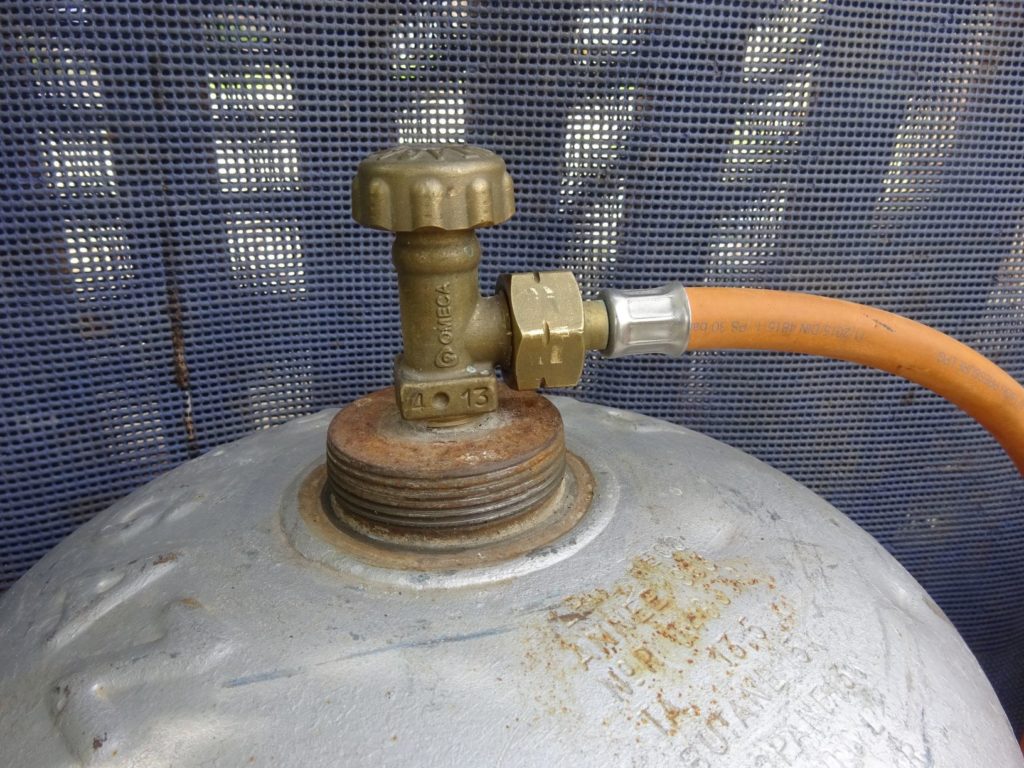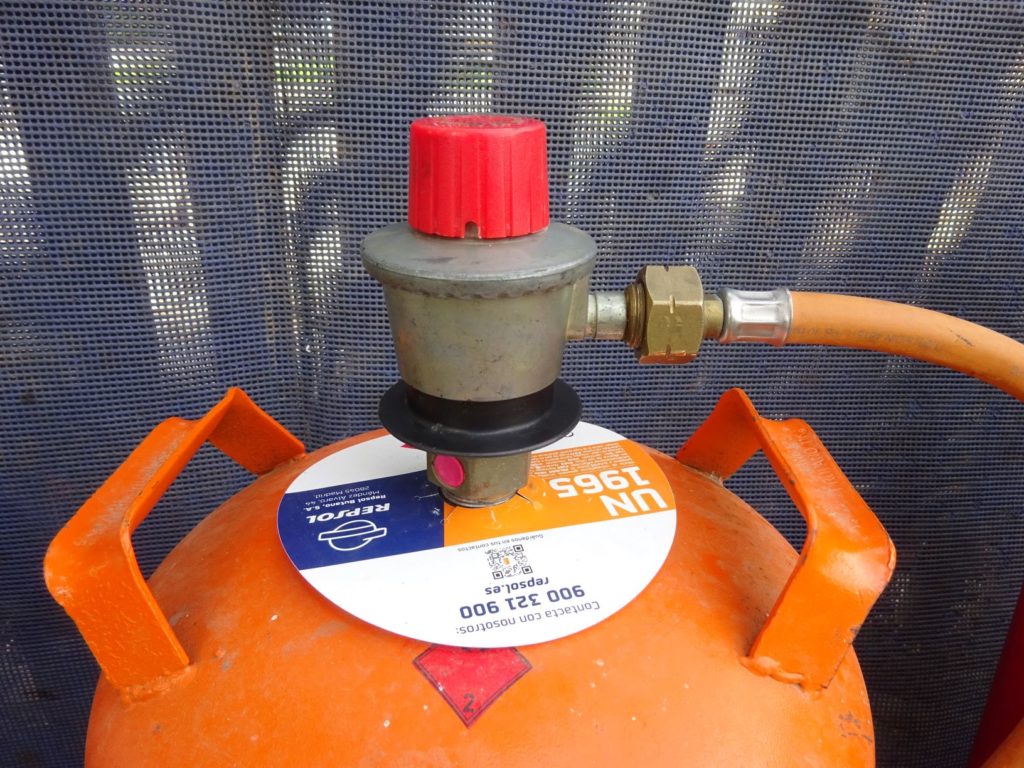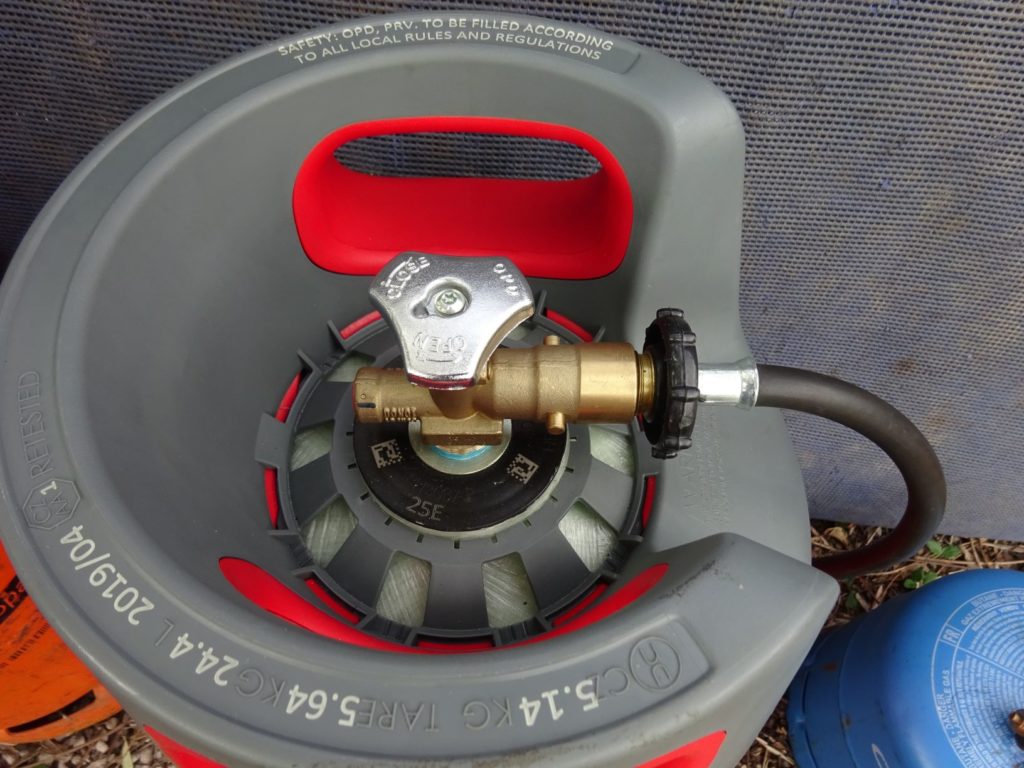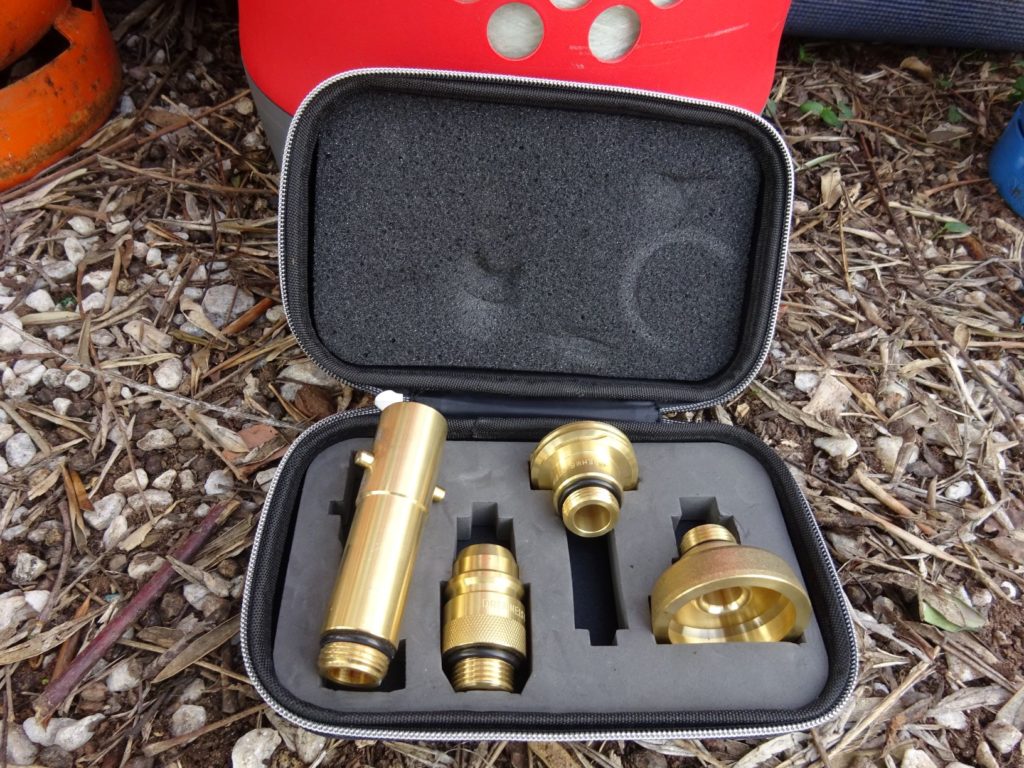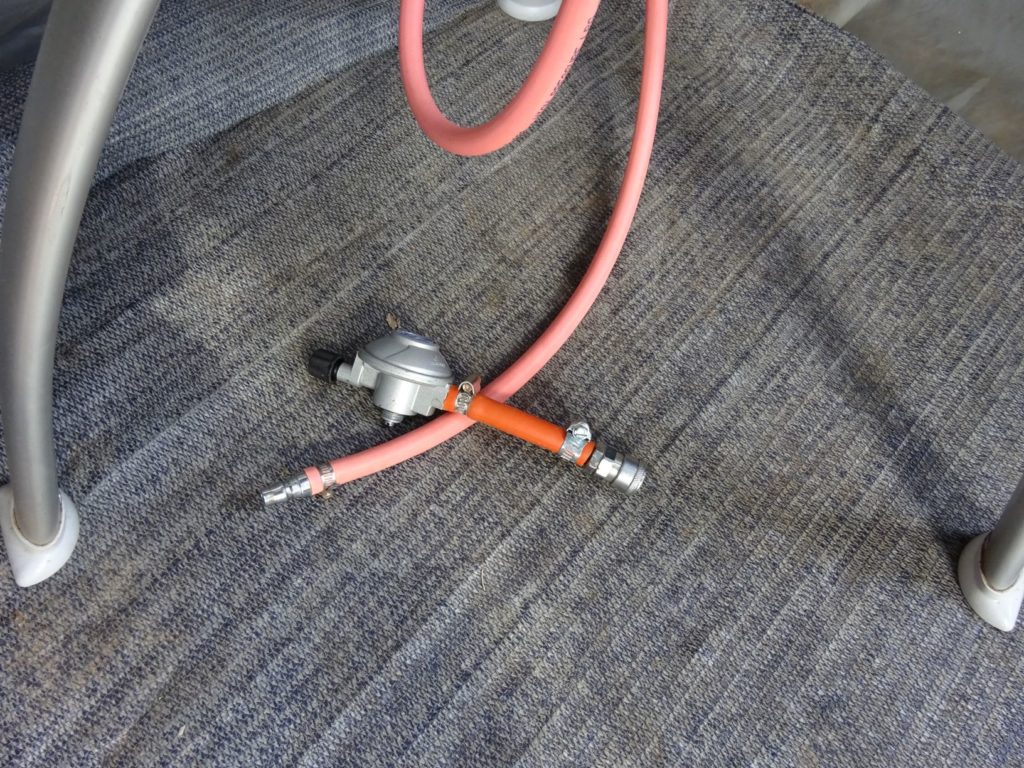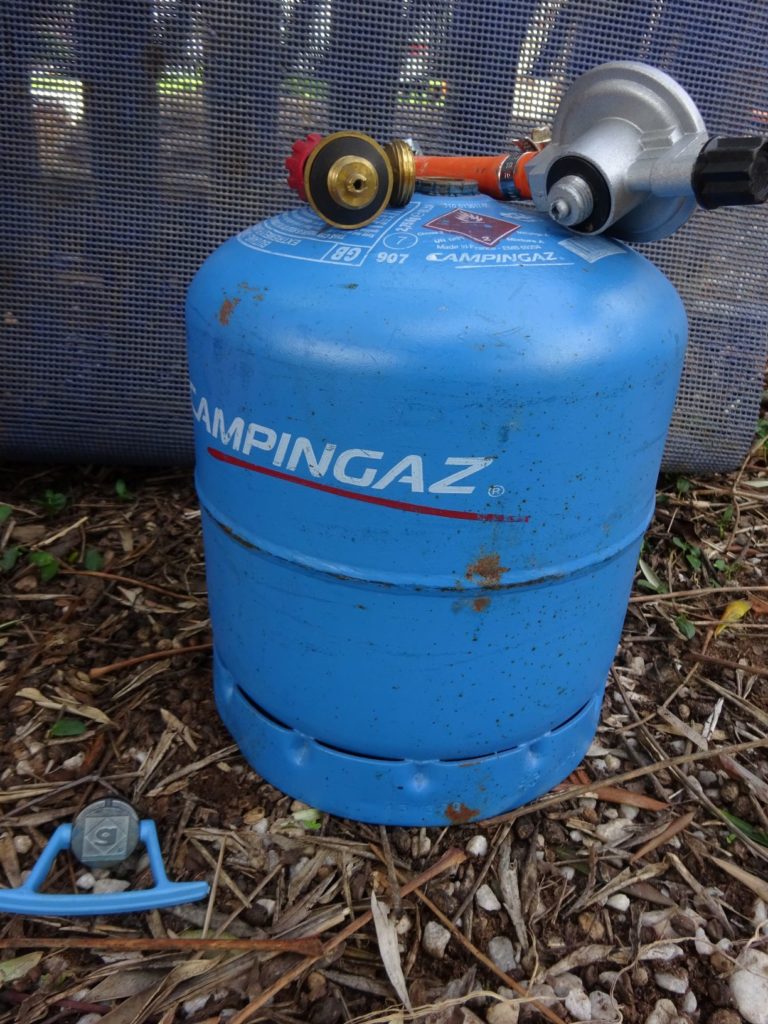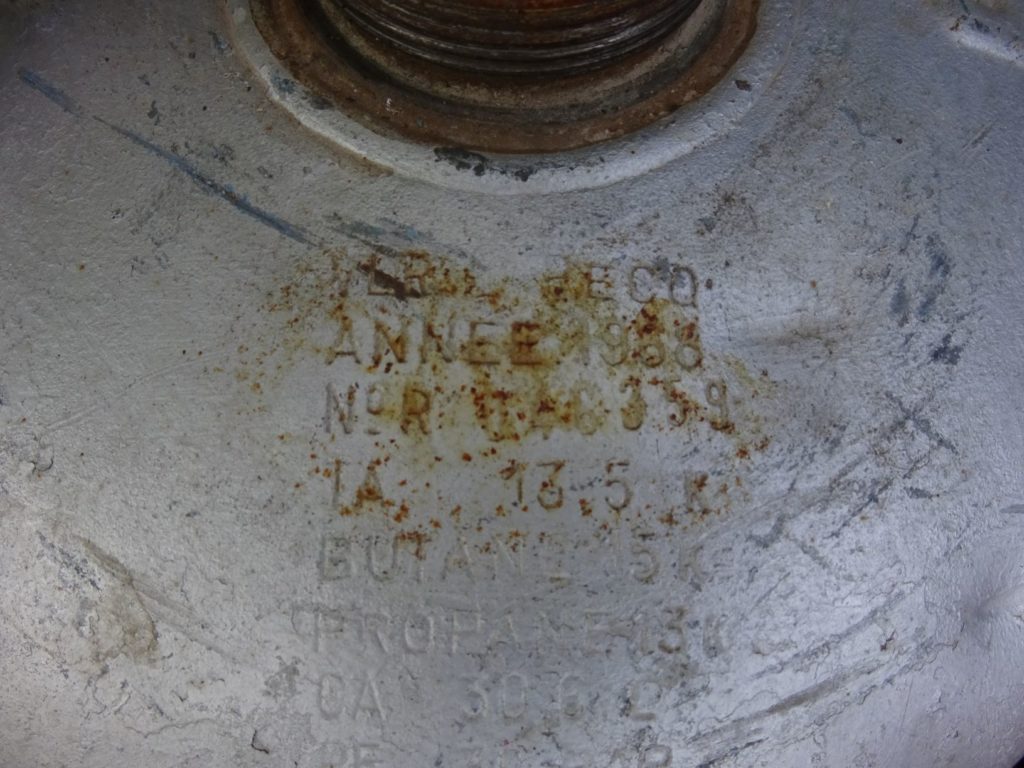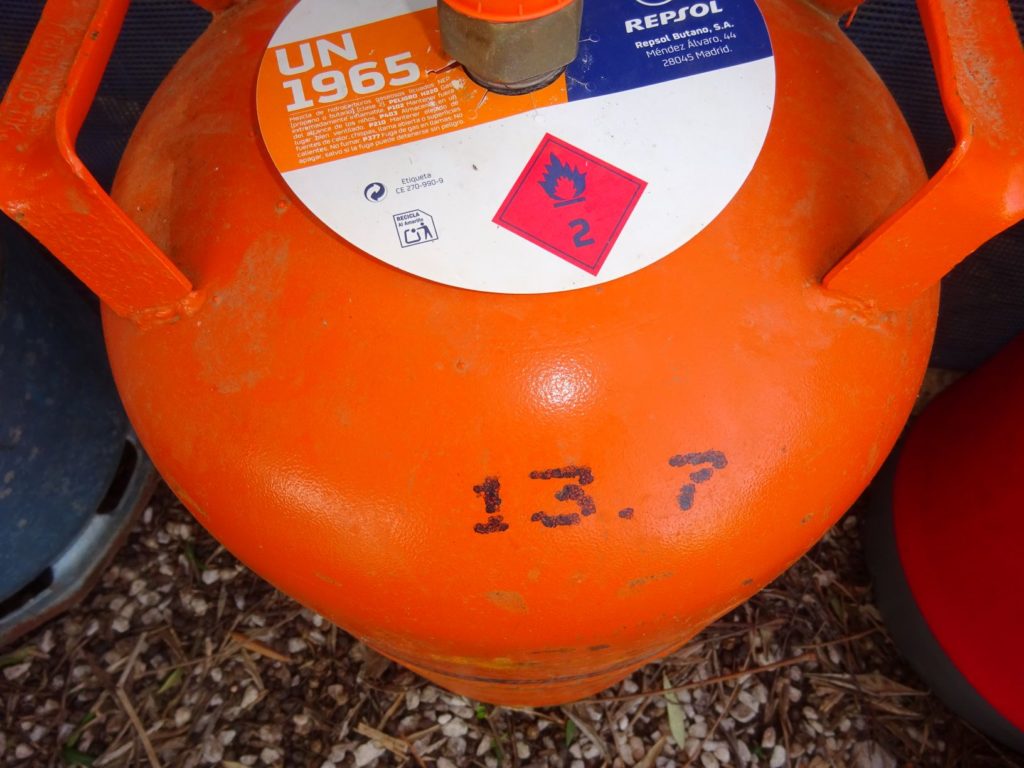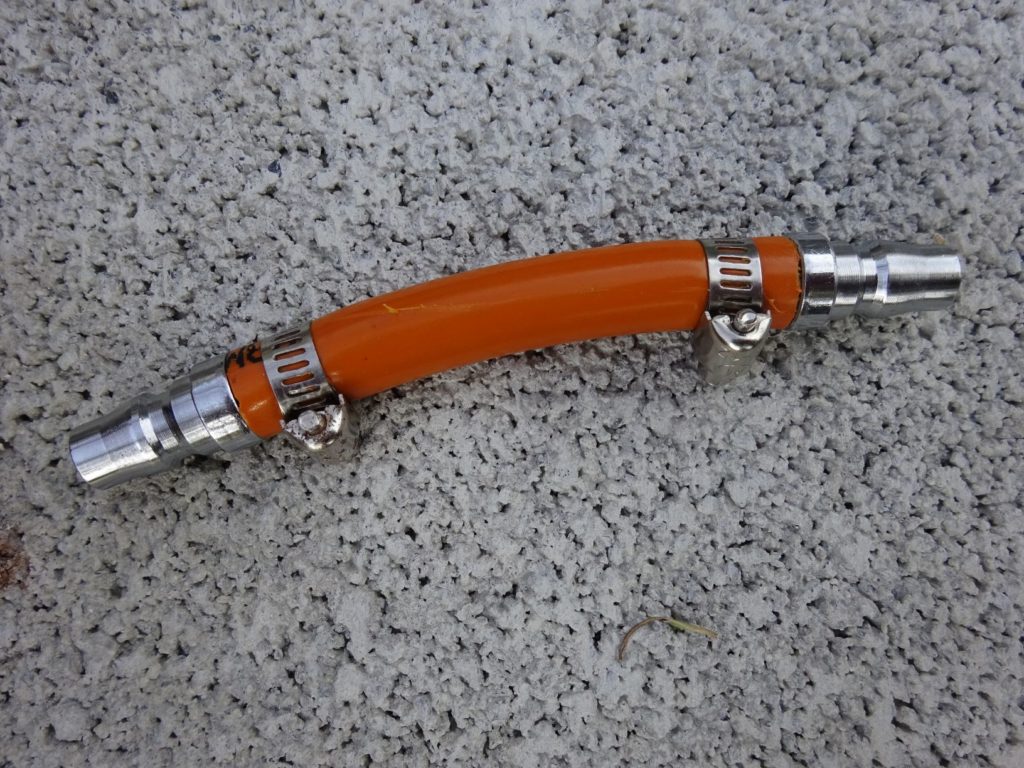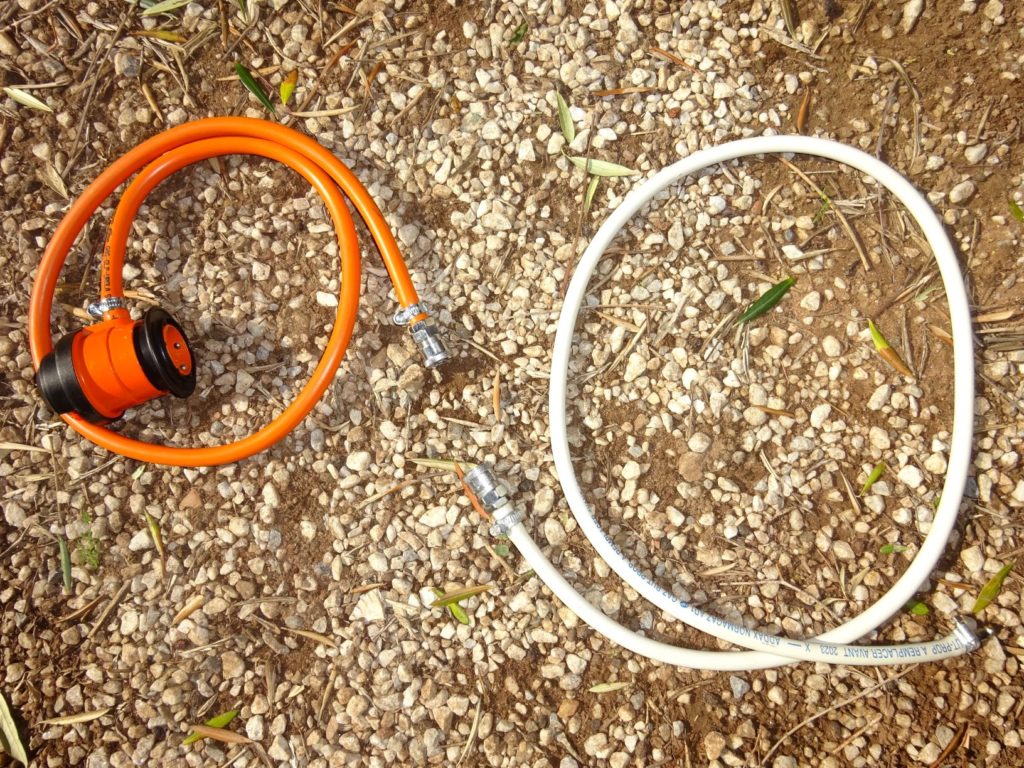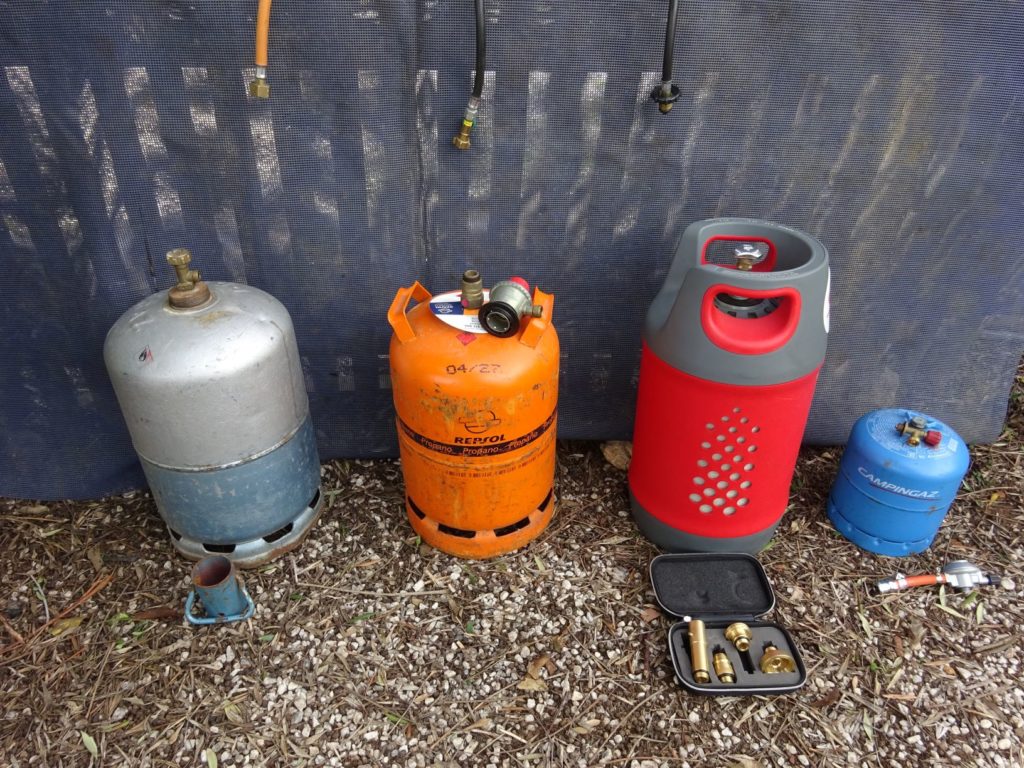
So it’s lockdown here in Spain, and not turned a wheel in nearly 5 months, so I’d thought I’d write up my guide to Gas in the caravan. Will also apply to motorhomes, but BIG CAVEAT is that I am not a gas engineer, and the following page is my interpretation of how it fits together. I’m not endorsing any products or fittings either, But Fleabay, local flea markets and some of the better know caravan suppliers have supplied all that we need. If you need any further explanations please contact me direct. I do have part numbers from suppliers if it helps.
One thing I’m not recommending though is taking Calor Bottles to Europe, unless it’s a short trip, and/or you’re prepared to bring them back empty. They’re not available or exchangeable in Europe, so just deadweight when empty.
So firstly let’s start with the caravan. There is a permanent bolt on regulator on the front bulkhead of the caravan, in the gas locker. Do not touch this, it is part of the fixed installation. EVERYTHING that I am writing about below fixes onto this.
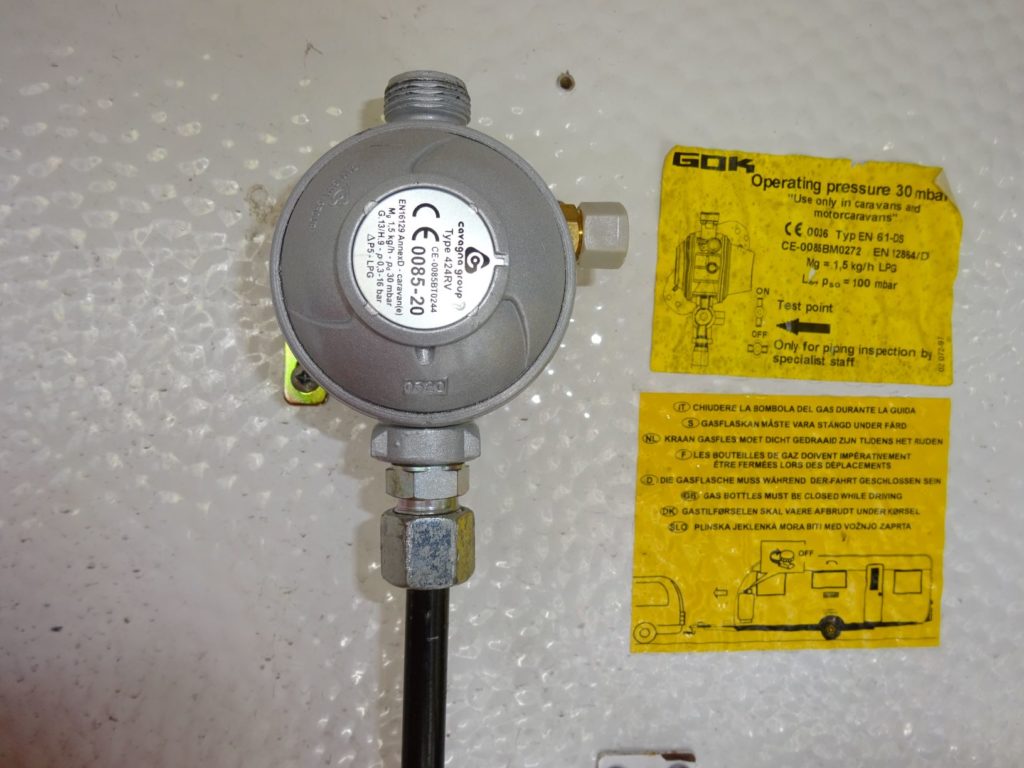
The fixing to the regulator is a HIGH PRESSURE HOSE known as a pigtail, don’t make your own up, the “normal” gas pipe sold by the meter, is for low pressure and fixed on with circlips, The pigtails have high pressure joints, We carry three, although two would do. The pigtails are sold as Butane or Propane, get one of each ! At the regulator end the pigtail screws on with a right hand thread, It is a 24m and bigger that you would normally have in a car toolkit, get a spanner. It is not the gas spanner you will see in the caravan shops, that’s for the other end !
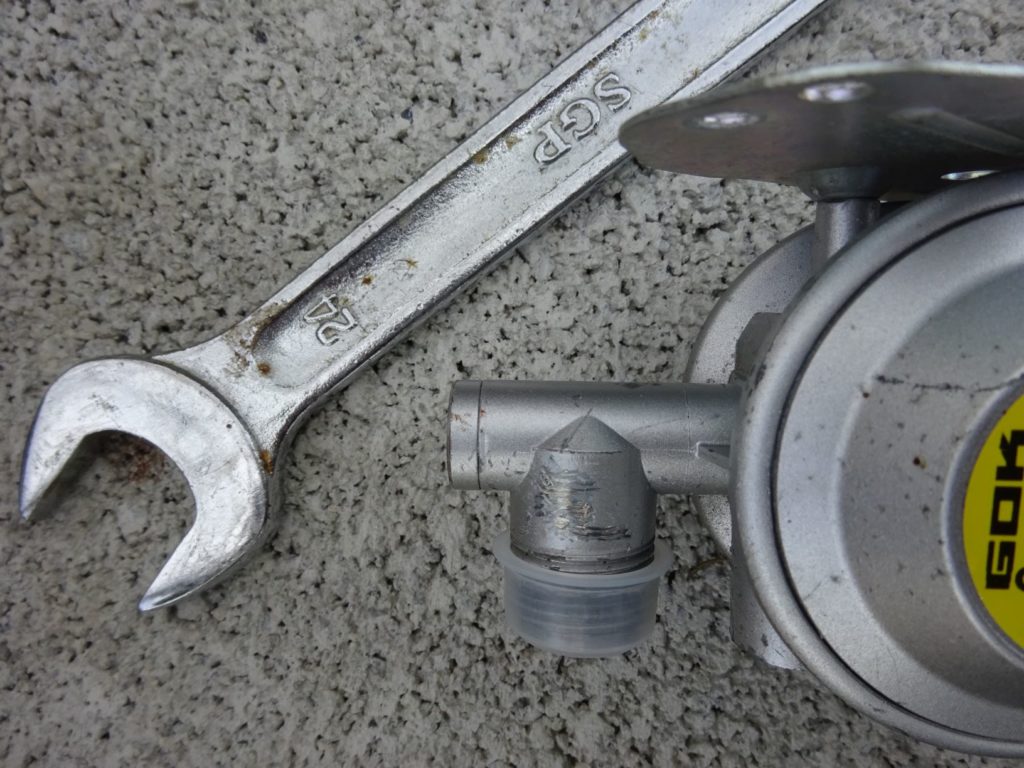
Now lets look at the Bottles , we carry two generally , although I happen to have three around at the moment, one French, the silver and blue one, which is Butagas and readily available in any French garage, supermarket or campsite. The Orange one is a Spanish one, Repsol, again readily available in Spain, and the third is an LPG refillable bottle called Safefill which we bought over from the UK.
All bottles are Propane, it’s not worth carrying Butane in colder trips, so we stick with Propane all year round . For anybody in the UK, that’s the Red Bottle for Calor Gas .
Because there’s a regulator on the caravan, the gas bottle does not need any connection to the caravan regulator except the for pigtail. This is important for the Spanish Repsol bottle, as there is no screw fitting on the bottle to enable this. An adaptor is needed on the top of the bottle, note it is NOT a regulator, it is a straight through connector. This can be a bit specialised and difficult to find, unless you know what you’re looking for, as its the same shape look and size as a Spanish regulator. The visible difference is that the connector to the gas pipe you need has a screw fitting. Message me and I’ll give you links to them,

So now you have the bottle and the pigtail (and a Spanish adaptor for the Repsol bottle). The ends going to the caravan regulator are obviously the same but the bottle ends are different. There will be washers at each end of this pigtail. Carry a couple of spares, they’re easy to lose.

Lets look at the bottle end – the “Propane” pigtail on the far right has either a bare tapered end, or a tapered end with a rubber seal on it. We use the one with the rubber seal, it is tightened by a handwheel, so easier to fit when in situ in the locker. It’s a left hand thread at the bottle end. The Gas Spanner you can buy at caravan shops is for this end if you don’t have a handwheel. The Butane Pigtail on the left and centre pictures below will fit the French bottle directly and the Reposol adaptor perfectly. It’s a left hand thread again.
The spanner for the French and Spanish gas bottle ends is bigger than 24mm, we carry an adjustable set of grips, but do find they cut up the brass fittings somewhat. I’ve seen plastic wrenches, for the French (Black hose) fitting we have, and I think I’ll enlarge the other end of the 24m spanner to fit, or maybe just get a gas spanner.
Our second of our Butane pigtails (Black hose) has a Free-Flow fitting on it , with a green button. This is to stop a rush of gas, it’s been fine, and we don’t see any difference between having it on and not having it on.
So now you’re set up , bottle in locker, pigtail attached, with washers checked, and you can turn the gas on and check it.
Here’s the list of essentials to get you going.
Butane Pigtail
Propane Pigtail with handwheel fitting
24mm spanner
Gas Spanner or grips
Spanish Adaptor for Repsol Bottle
Spare washers for pigtails, and separate spare button ones for end of handwheel connector.
The Spanish Bottles can readily be found at any car boot sale, around 10 Euros, so consider it a disposable item. I’ve had my French Bottle for sometime, when it’s empty I just put it in the locker. Exchanging French or Spanish bottles at a supermarket or garage is never a problem and it’s around 10 to 15 Euros for a the large ones, about a quarter of the price of gas in the UK. You will also be able to borrow one from your campsite I’m sure. The Safefill is our backup bottle. I’ve got a set of adaptors for filling with LPG at European garages, so don’t buy the Safefill without these if going to Europe.
Our backup gas fitting kit is thus :
Safefill bottle
Set of Safefil Adaptors for Europe
We aso carry a Campingaz 907 refil. They’re not cheap, relatively, but they are fine for days out and remote barbequing, when we take the Cadac or portable cooker out. More about that later. There is a smaller 904 Campingaz bottle, but that would only boil a kettle or two before it ran out so don’t bother with that one.
So how much gas do we have left ? Well it’s easy if you have some scales. On the side of these gas bottle is stamped or printed the “Tare Weight”. This is the weight when empty, so weigh the bottle, say it’s 20 KG, deduct the Tare weight , say it’s 13.7 kg, and you have 6.3 kg gas left. It’s the same tare system with UK Calor Bottles, but the tare weight is on the aluminium tag on the top , and it’s in Pounds and Ounces, just to make it complicated !!
Just shake the Campingaz one, to see how much is left , its easy to guess that one.
So now we’re running and cooking on gas. We did run out once in the Massif Central on our way back from Spain, before I knew what I have written above !! It was minus 8 degrees we had a 6 amp hook up, so we’re not going to run out again !
There are a couple of adaptors and connections I do carry that may help if things go wrong. They centre around the bayonet gas connectors, which I found on FleaBay, but not from any UK supplier that I know of, which makes me think that may not be certified for use in the UK, however it’s all low pressure side. The female side of the bayonet connector should always be connected to the regulated (gas) side. Firstly we cut the hose to the BBQ, to incorporate a connector. This means we have options to plug the BBQ into either the Caravan take-off or the Campingaz bottle or indeed any bottle for which we have a regulator.
Should Caravan regulator fail (it did once) we can get out of trouble by using a gas bottle with regulator and feeding low pressure gas into the caravan through the BBQ take off point. I had to make up a short gender changer should the regulator fail. Just message me if you want more info on this , don’t want to get too technical on here, or you might think I knew what I was talking about ! As examples in the picture below you can see a Spanish Regulator meaning we can use the BBQ remote from the caravan, or back-feed it into the caravan. Any French or Spanish garage or hardware shops sell regulators, so don’t see the point of carrying them as backups.
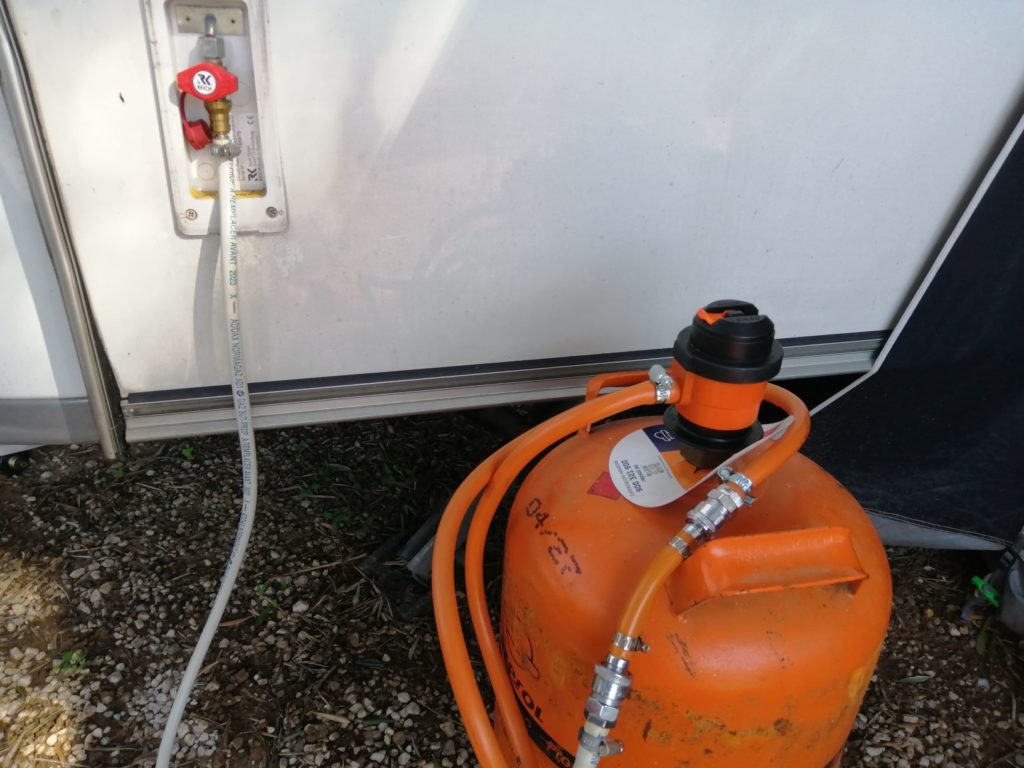
So adding the above into the equation, and being bullet proof for France and Spain, here’s the optional list of things to carry.
Campingaz 907 Bottle
Hose from BBQ take off point with bayonet connector (F)
Regulator for Campingaz bottle with Bayonet Connector (F)
Fit a Bayonet Connector (M) to end of BBQ hose
Gender changer (MM) if you need to feed gas in through the BBQ Take off point (need to source a locally purchased regulator)
So that’s our gas, sorted, I’ll post about water and waste later,
Remember please, gas is dangerous, I’m not a gas engineer, not giving advice, just sharing how I do it. Use a qualified gas engineer for your own installations.

